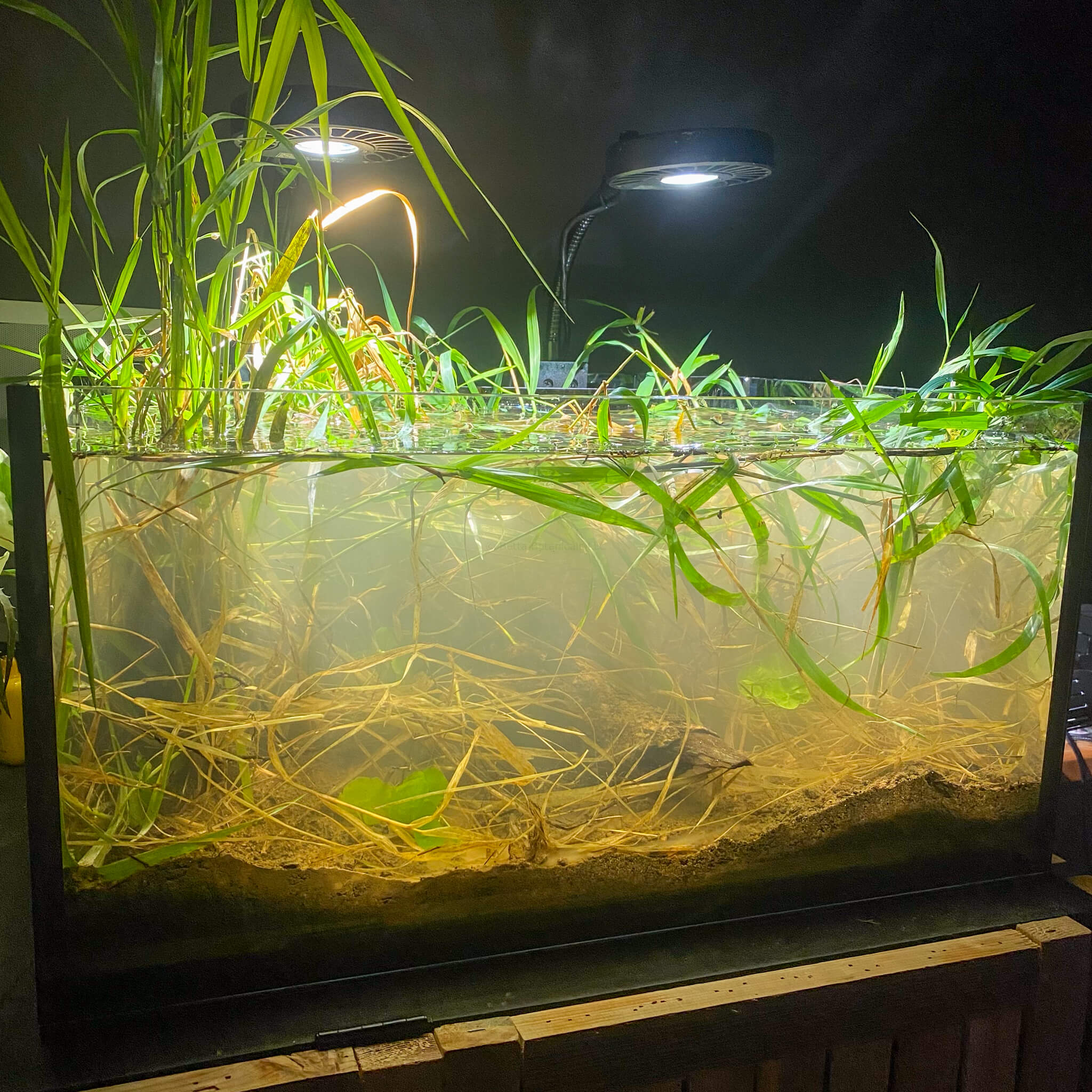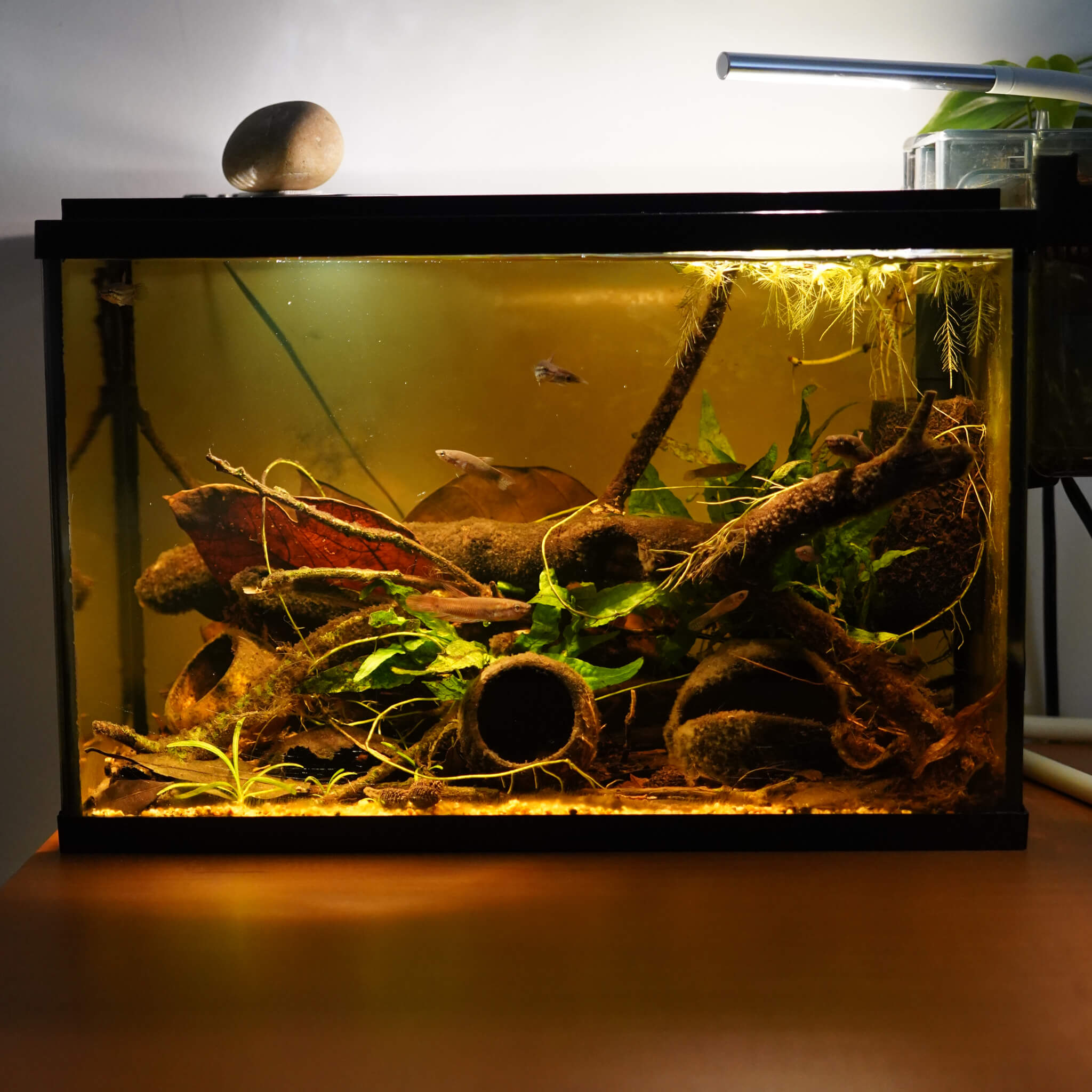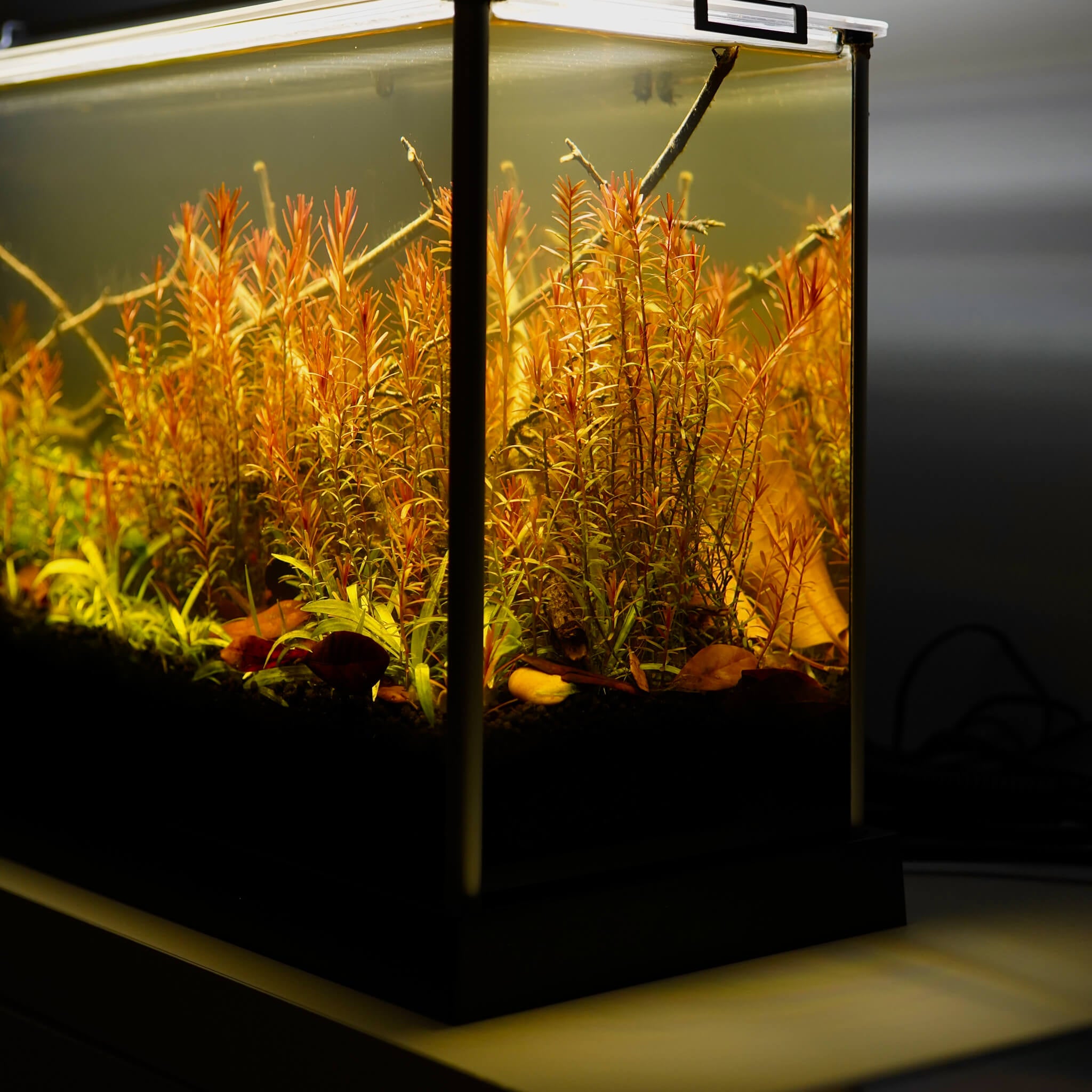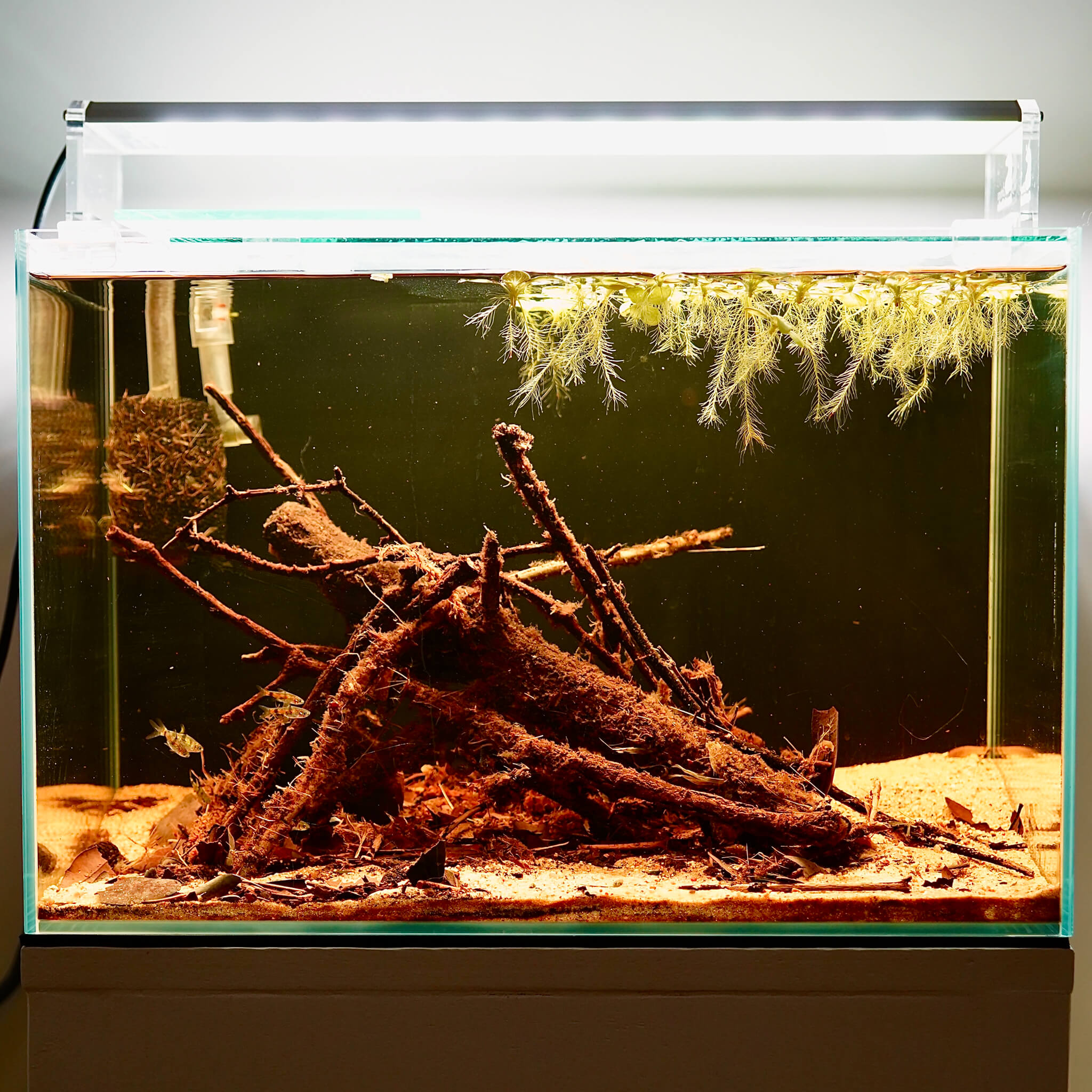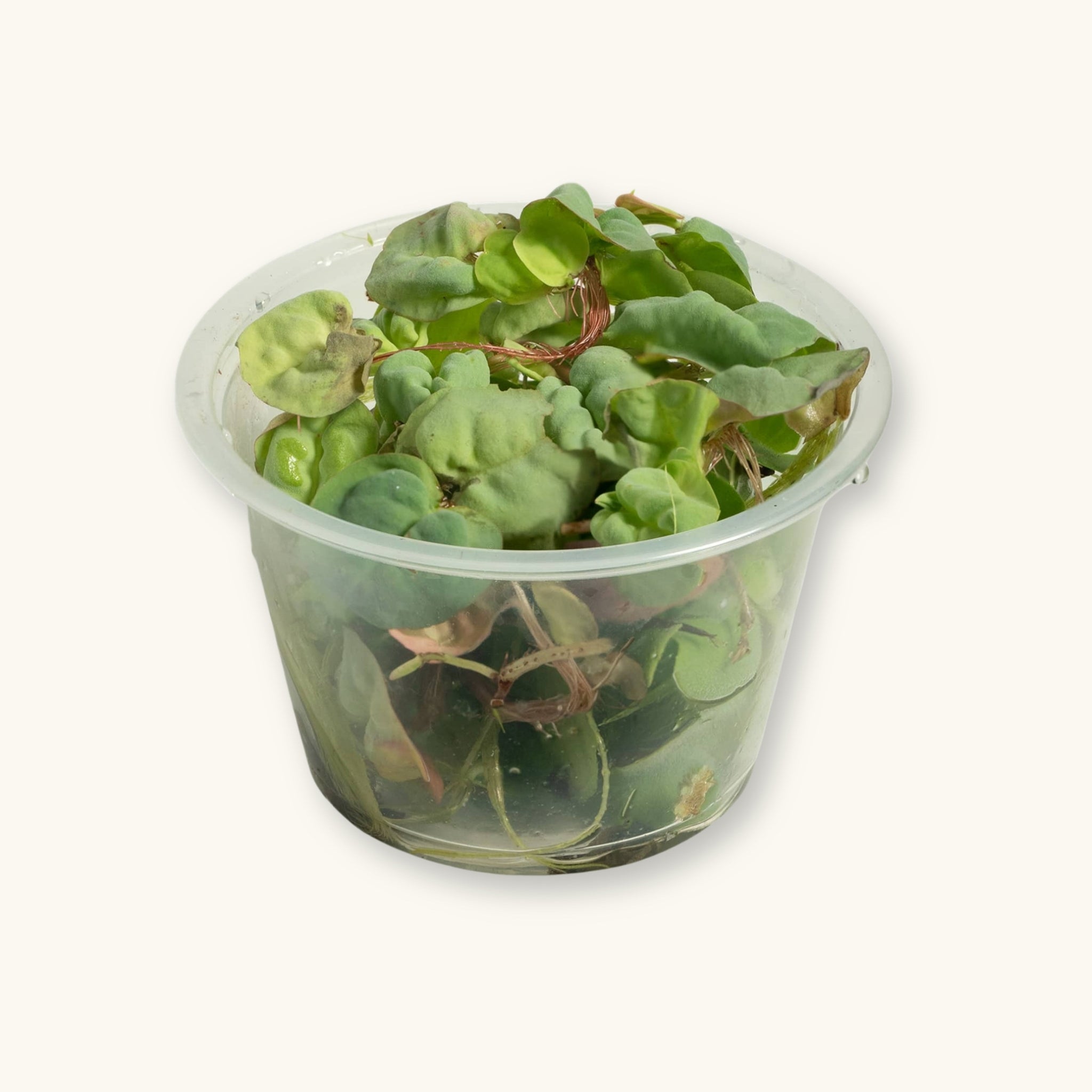
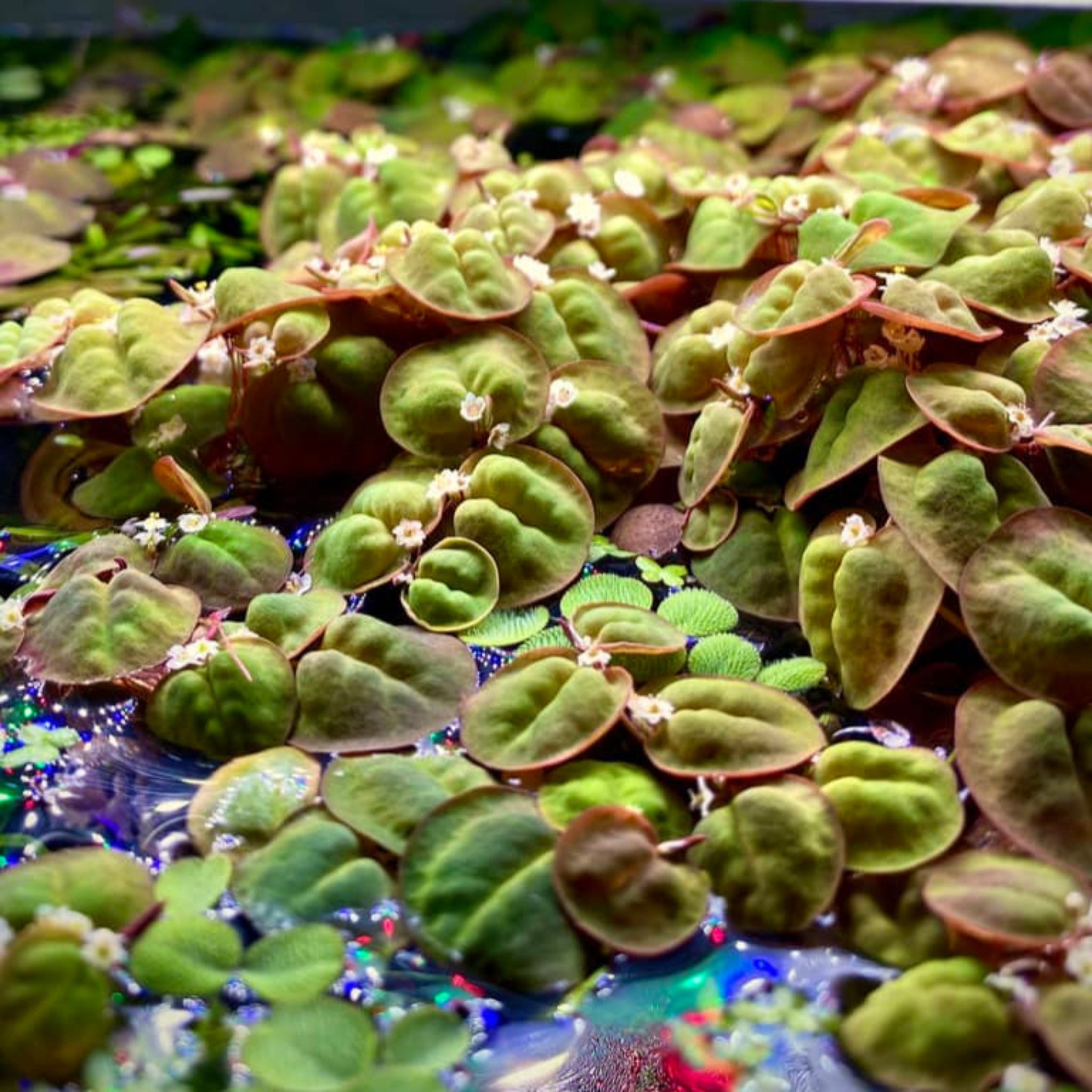
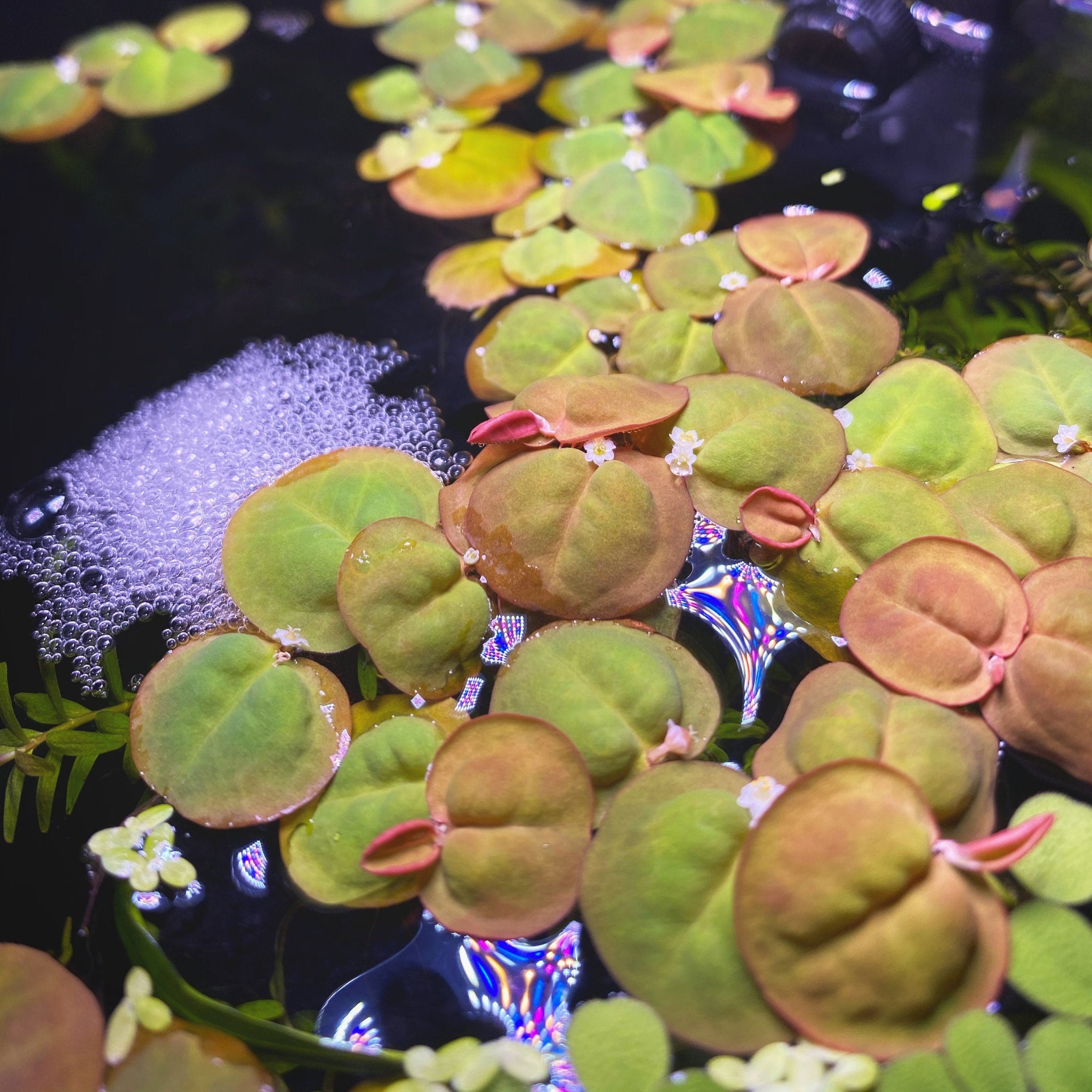
Red Root Floater | Phyllanthus fluitans
Red Root Floaters
Scientific Name: Phyllanthus fluitans
Common Names: Red Root Floaters
Red Root Floaters, scientifically known as Phyllanthus fluitans, are prized for open top aquariums because of their slender stems and distinctively hairy, centrally arched floating leaves. Their reddish roots draw nutrients directly from the water, though they require careful maintenance, demanding specific lighting and water conditions along with additional fertilizer for optimal growth. Despite their water-repellent leaves, they're sensitive to dripping water, thriving best in open tanks with no lids... not the most ideal setup for betta fish. Enhanced lighting intensifies their red hue and accelerates growth, but they require harder water as light increases. Successful cultivation may yield rare white flowers and green fruits. Maintaining constant humidity, low-flow, and regular fertilization with trace elements sustains their growth.
Caring for Red Root Floaters in Blackwater Aquariums
Care: Easy
Light: Low-High
CO2: Not Necessary
Propagation: Side shoots
Tint Tolerance: Low to High, because Red Root Floaters are a floating plant, the tint levels of the aquarium do not impact growth.
Native Habitat: South America
All Plants may contain snails or snail eggs. We keep them in all of our tanks for the benefits they provide. Our blackwater aquarium plants are provided by H2OPlants in adherence to their Shipping and DOA Policies. Your curated selection will arrive in their packaging separate from your botanical & merch orders.

Red Root Floater | Phyllanthus fluitans
contrast the tint with greenery
While the aesthetic appeal of tinted waters can be quite attractive to us, the recreation of nature—which includes both submerged and emersed plants—is the end goal. Flora helps to improve water conditions, feeding patterns, spawning displays, and territory building.
Aquatic Plant FAQs
DOA Policy
Please ensure that you add a heat pack or cold pack to your orders if temperatures in your area are above 90°F or below 40°F. Click for more info on our DOA Policy.
Are these plants duckweed and snail free?
All Plants may contain snails or snail eggs, small macroinvertebrates, and duckweed. We keep them in all of our tanks for the benefits they provide. We have experienced the presence of small snails, ostracods, daphnia, and beneficial detritus worms.
Are your plants only for tinted water conditions?
Nope! All of our plants will grow perfectly in untinted aquariums that have CO2 and aquasoils, or low-tech planted aquariums. Our selection, though, is optimized for emersed plant growth and low- to medium-tinted water environments.
What is your aquatic plant shipping schedule?
We’re a small company and ship Tuesdays & Thursdays only. Orders placed Wednesday–Sunday → Ship Tuesday. Orders placed Monday–Tuesday → Ship Thursday
Are your plants just for bettas?
Nope. Our aquatic plants are safe for almost all aquariums, terrariums, vivariums, and paludariums. Many of our plants can be grown emersed in filter compartments, vivariums, or incorporated into wabikua.
What are Tannins?
Tannins are natural compounds released by leaves, seed pods, and bark as they decompose in water. They soften water, gently lower pH, and create the characteristic tea-stained tint found in blackwater habitats. But their role goes far beyond color—tannins fuel beneficial bacteria, fungi, and biofilms, which form the foundation of a healthy ecosystem. They also offer mild antifungal benefits and help reduce stress in fish by replicating the natural conditions they’ve evolved in. At their core, tannins are plant-derived antioxidants that connect your aquarium to the same processes at work in wild flooded forests and streams.




